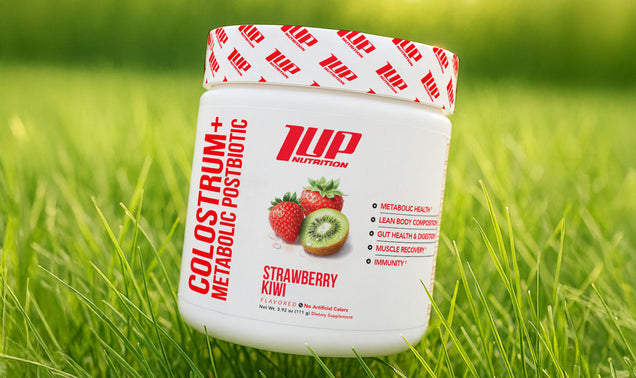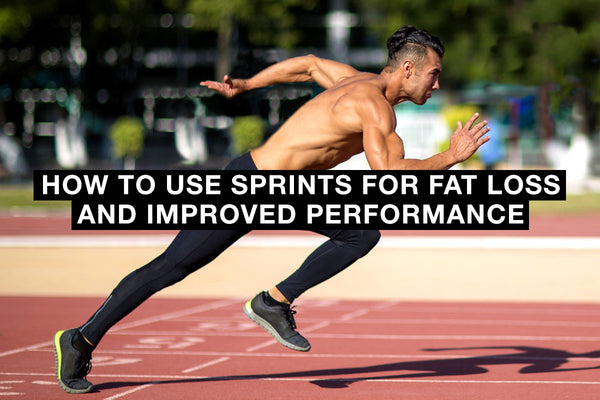Sprinting isn’t easy, and it won’t go viral on social media, but it’s one of the best things to burn calories, build muscle, improve athleticism, and get results during your transformation challenge.
Sprinting is something innate to human physiology. In centuries past, it was the only means of avoiding predators and/or hunting food.
Unfortunately, sprinting has fallen out of favor and in its place are less functional forms of cardio like the elliptical or long, steady-state jogging, which does more to beat up the joints than it does help improve athleticism or burn calories.
In this article, we’ll show why sprinting is one of the best ways to burn calories, build muscle, and save time!
Let’s get started!
How to Warm Up for Sprints
Like other forms of physical activity, it’s imperative that you properly warm up before sprinting.
Remember, true sprinting is an all-out effort, similar to high-intensity interval training. Failing to properly warm up your nervous system and (more importantly) your body, can lead to injury, such as a hamstring tear.
As such, it’s essential to optimal performance and minimizing injury risk to warm up thoroughly before doing your “working sets.”
One of our favorite ways to warm up before sprinting is to start with 5 minutes of light movement (e.g. an easy jog). This helps to get the blood going and increases your core temperature. Following your 5-minute dynamic warm up, it’s helpful to perform some basic mobility drills (such as adductor rocks) and activation movements (such as glute bridges).
Lastly, perform a circuit of movements, progressing from lower-intensity to higher-intensity plyometrics.
An example of one such circuit would be:
- Pogo Jumps (10-20)
- A-Skips (10 yards)
- Power Skips for Height (10-20 yards)
- Power Skips for Distance (10-20 yards)
- Bounding (20 yards)
- 20-yard sprint using 50% effort
- 20-yard sprint using 65% effort
- 20-yard sprint using 80% effort
Key Pointers for Sprinting (Safely) for Fat Loss
There’s No Need to Go 100%
There can be a tendency, especially if you subscribe to the social media philosophy of “go big or go home” that you have to go 100% in your sprints.
But, truth be told, there’s no need to go to your absolute breaking point of sprint speed, unless you’re a professional or collegiate sprinter. For the average fitness enthusiast, and even the weekend warrior, you’ll derive all the fat loss and performance benefits you could want sticking within 90-95% intensity. You’ll also find it far easier to recover and less likely to sustain an injury (i.e. pull a hammy).
Plus, by leaving some “in the tank,” you'll be able to recover significantly faster without hindering fat loss progress or detracting from your upcoming resistance training workouts.
Choose Hill Sprints Over Flat Sprints
When we think of sprinting, we think of trucking it across flat land, but for the average individual, hill sprints may be the better option.
For starters, hill sprints are safer than flat sprints since the hill serves as a “governor” as the incline won’t allow you to go 100%, which helps protect against hamstring tears (a common injury for individuals who sprint on flat ground).
Second, running up an incline forces your glutes, hamstrings, and calves to work harder, providing a greater muscle-building stimulus than flat ground sprints.
Third, sprinting uphill taxes your cardiovascular system to a greater extent than running on flat ground, which amps up calorie burning...thereby supporting weight loss.
Dial-In Your Work-Rest Ratio
Intensity is perhaps the most important component of sprinting for fat loss and performance.
In order to maintain a high level of intensity during your sprinting session, it’s imperative that you allow for enough rest between your “sets.”
Determining how much rest you need will require a bit of experimentation as you’ll need to rest long enough to be able to sprint at a high intensity without resting so long that you're on the hill or at the track all day.
Give Yourself Room to Slow Down
A great many hamstring injuries occur during deceleration from the sprint, which can be greatly avoided if you opt for sprinting uphill (as we mentioned above) as opposed to sprinting on flat ground.
Nevertheless, if you are sprinting on flat ground, such as a track or artificial turf at the gym, make sure to give yourself some room to slow down. A good rule of thumb is to allow for 20 yards, or so, to slow down instead of trying to come to a complete stop as soon as the sprint is done.
How to Add Sprints to Your Training Plan
For Performance
If you are training primarily for improved performance, it’s best to allow yourself to fully recover between sprints.
So, for shorter sprints (30-60 yards) you want to rest 3-5 minutes between sets. And, for longer sprints (80-200 yards) you want to rest between 5-8 minutes.
Typically, sprint sessions will be performed on non-lifting days so as to allow for maximum effort and performance during the sprints.
For Fat Loss
If you are training primarily for fat loss, the amount of rest you take between sets is how long it takes you to walk back to your starting point.
So, if you’re using hill sprints, your “rest” is the amount of time it takes you to walk down the hill. You don’t have to run down the hill, but you don’t have to lollygag either. Just take a gentle stride down the hill, and when you reach the bottom gather your wits about you and truck it up the hill again.
Generally speaking, short hill sprints will be performed at ~90% of your maximum speed while longer hill sprints will be performed between 75-90% of your maximum speed.
As for when to program your sprints, specifically in regards to fat loss, they can be performed on either resistance training days or non-training days. If you choose to perform them on resistance training days, they can be used as a “finisher” after your main lifts are complete.
If performing them on non-training days, make sure to do a proper warm up and then get after it for 20-30 minutes. You won’t need to spend 45, 60, or 75 minutes slogging it out. And, that’s where the real beauty of sprinting (or other forms of HIIT cardio) really shine -- if you’re willing to put in the effort, you’ll save lots of time without sacrificing any of the calorie burning or fat loss benefits!
As an end cap, here are two ways that you can add sprints into your current lifting program:
Sprinting for Fat Loss:
- Sunday: OFF
- Monday: Lower Body
- Tuesday: Upper Body and Short Sprints
- Wednesday: OFF
- Thursday: Lower Body
- Friday: OFF
- Saturday: Upper Body and Medium Sprints
Sprinting for Performance & Hypertrophy
- Sunday: OFF
- Monday: Short Sprints
- Tuesday: OFF
- Wednesday: Lower Body
- Thursday: OFF
- Friday: Medium or Long Sprints
- Saturday: Upper Body
Takeaway
Sprinting is an excellent option for those looking to build muscle, improve performance, and lose fat. For the average individual, hill sprints may be the best option as they make your heart, lungs, and legs work harder than flat sprints while also having less risk for injury.
Sprinting can be extremely fatiguing both mentally and physically (if you’re doing it right), so it’s essential that you fuel up properly before, during, and after your training sessions.
If you’re sprinting outdoors (which most of you will be doing), it’s imperative to stay properly hydrated, especially during the hotter months of the year. That’s why we like to sip on a serving of BCAA/EAA during sprint workouts.
After sprinting, it’s vital to get in the right nutrients to halt protein breakdown and kickstart the recovery process. An easy to fix post workout meal is a shake composed of a scoop of 1UP whey protein powder and a scoop of Pure Rebuild.






